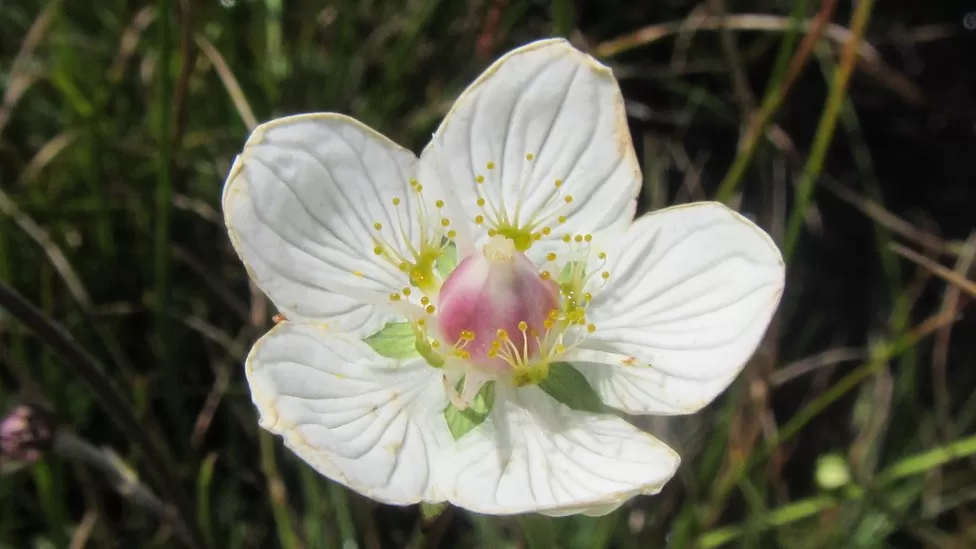A once-diminishing flower with an alluring yet deceptive name has experienced a resurgence, adorning Cumbria’s landscape with pockets of vibrant blooms across its fells.
Known as Grass-of-Parnassus, this floral emblem graces the Cumberland county flag and the logo of the Cumberland Council. Though previously prevalent throughout the UK, it faced decline in enclosed farmlands where wetland habitats were drained to enhance agricultural yields.
In a turn of events, specialists reveal that the plant’s revival can be attributed to a shift towards less intensive grazing practices. John Hooson, a nature conservation adviser for the National Trust, noted, “It’s such a remarkable plant, boasting a unique flower structure characterized by star-like petals adorned with verdant veins, a rosy central cone, and bright yellow stamens.”
Presently, the wetland plant—also referred to as Parnassia palustris or, more plainly, Bog-star—is best observed during this season. Kevin Scott, the Northern Reserves officer at Cumbria Wildlife Trust, highlighted its flourishing presence at Eycott Hill near Penrith, nestled amid a series of swamps and mires within the nature reserve. Scott attributed its prosperity to a blend of acidic and base-rich environments, particularly limestone-based habitats.
Eycott Hill, spanning 220 hectares, boasts approximately 20 wetland plant species, with Grass-of-Parnassus gracing the landscape from July to October. Another hotspot for this species is Mislet Scroggs near Windermere, an untamed field adorning the side of a fell, where it resides alongside a farm.
Mr. Hooson expounded on the geographical distribution, stating, “Being a northern species, it possibly could have thrived across the nation. Yet, intensive farming in the southern regions eradicated it there. However, here in Cumbria, farming practices are less demanding, allowing it to thrive in nearly every valley of the Lake District.”
Interestingly, the plant’s name is deceptive, as it bears no resemblance to an actual grass. The origins of its name remain enigmatic. Mislet Scroggs, a haven for wildflowers, remains untouched by sheep grazing for over a century, potentially contributing to its biodiversity.
Paddy Deady, a fell farmer from Troutal in the Duddon Valley, reflected on his encounter with the flower, which he spotted only once at Yewbarrow in Wasdale. “It struck me how disheartening it is for a flower associated with the county to be so rare. I’m not an expert, but while gathering, I stumbled upon it in a damp patch of land. This prompted me to learn more, and I was surprised by my lack of knowledge.”
Mr. Deady’s role as the project manager for the Upper Duddon Landscape Recovery Project offers hope for the flower’s resurgence. He expressed optimism about cultivating and reintroducing it to more fells as part of habitat restoration efforts.
The Grass-of-Parnassus is a notable feature on the county flag, portrayed with three white flowers. It was also chosen as the official logo for the newly established Cumberland Council. A council representative highlighted the selection, emphasizing the need for branding that conveys modernity, cleanliness, and adaptability while encapsulating facets of Cumbria’s heritage and scenery.


